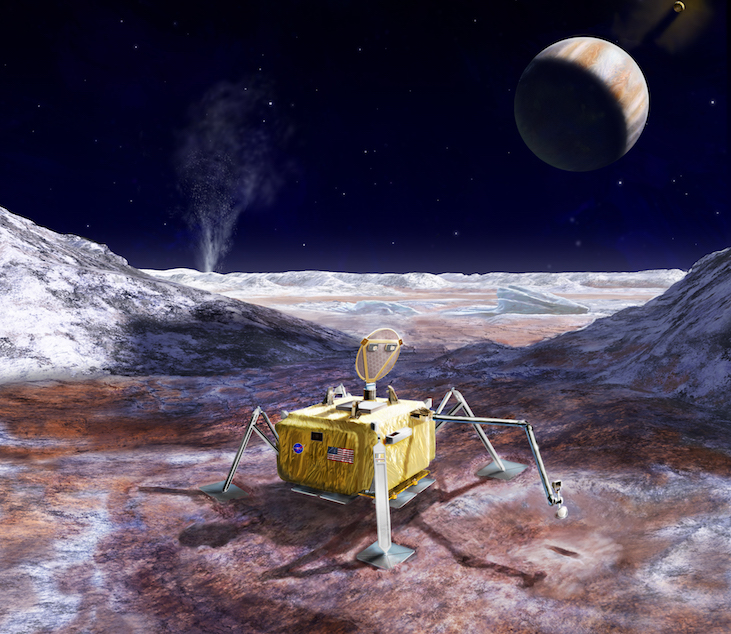
For decades now, Europa has beckoned – this moon of Jupiter which is frozen on the outside but hides a global ocean on the inside – has so far only been visited by spacecraft during brief flybys. Scientists and the public alike have been wanting to return to this fascinating little world since it offers the possibility of maybe, just maybe, being home to some kind of life. Plans have been inching forward for a new mission to conduct multiple, closer flybys of Europa, to learn more about the ocean just below the ice, but what about actually landing? A lander would be a more difficult prospect since Europa doesn’t have an atmosphere, but is certainly doable. Now, NASA has received a formal science report on how best to conduct such a mission. This is a significant step toward finally being able have the view of looking up at Jupiter hanging in the inky black Europan sky – a dream of many for a long time.
The report was submitted to NASA on Feb. 7, 2017, by the Science Definition Team (SDT), which had started working on a proposal in June 2016. The 21 scientists involved wanted to better understand the challenges, feasibility and science value of the potential mission. That study was in response to a congressional directive in early 2016, in which the Planetary Science Division began a pre-Phase A study to assess the science value and engineering design of a future Europa lander mission. From the report:
“The Europa Lander Science Definition Team Report presents the integrated results of an intensive science and engineering team effort to develop and optimize a mission concept that would follow the Europa Multiple Flyby Mission and conduct the first in situ search for evidence of life on another world since the Viking spacecraft on Mars in the 1970s. The Europa Lander mission would be a pathfinder for characterizing the biological potential of Europa’s ocean through direct study of any chemical, geological, and possibly biological, signatures as expressed on, and just below, the surface of Europa. The search for signs of life on Europa’s surface requires an analytical payload that performs quantitative organic compositional, microscopic, and spectroscopic analysis on five samples acquired from at least 10 cm beneath the surface, with supporting context imaging observations. This mission would significantly advance our understanding of Europa as an ocean world, even in the absence of any definitive signs of life, and would provide the foundation for the future robotic exploration of Europa.”
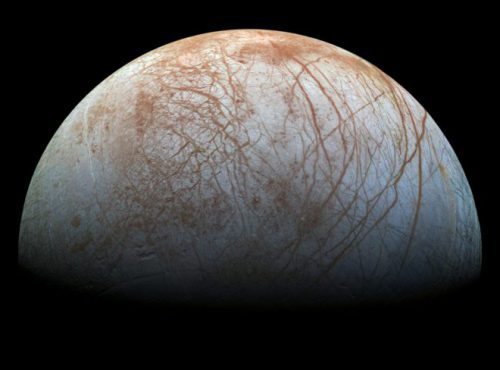
As defined in the new report, there are three main science objectives of the mission: search for evidence of life, assess the habitability by directly analyzing material from the surface and characterize the surface and subsurface to support future robotic exploration of Europa. The report also makes recommendations about the number and type of science instruments that would be required to confirm if signs of life are present in samples collected from the surface. The objectives are outlined in detail, from the report, below:
- Search for Evidence of Life on Europa. No singular measurement would provide sufficient evidence for the detection of life on Europa; rather, the conclusion that evidence of life had been detected would require multiple lines of evidence, from different instruments, on a set of samples examined across a variety of spatial scales. Through the combination of the OCA, VS, MLD, and CRSI, the model payload for the Europa Lander presents at least nine different and complementary possible lines of evidence for signs of life in samples collected on Europa. These measurements range from detecting and characterizing organic compounds, to looking for cell-like structures, to determining if the samples originate from within Europa’s ocean or other liquid water environments. The organic chemical analyses are specifically targeted to reveal the broadest possible range of signatures produced by life, including analysis of molecular type, abundance, and chirality. Spectroscopic analyses of samples provide the inorganic and geochemical context of the samples, and enable discrimination between material native to Europa (endogenous) and materials that may have been externally delivered (exogenous, e.g., from micrometeorites), or processed by Europa’s radiation environment. Collection of five separate samples, each of at least 7 cc total volume, provides for repeated measurements, ensuring redundancy and robustness of results. Detection limits for measurements targeting evidence of life were established by comparison to several extreme, nutrient limited environments on Earth (Chapter 3). Importantly, the model payload and measurements defined for Goal 1 generate highly valuable scientific results even in the absence of any signs of life.
- Assess the habitability of Europa via in situ techniques uniquely available to a lander mission. If the measurements from Goal 1 reveal potential biosignatures, then it is important to understand the geochemical context for habitability, and the proximity of the landing site to habitable regions within Europa’s ice shell and ocean. However, if the measurements of the samples and landing site reveal no definitive biosignatures, then it becomes essential that ambiguous or null results are understood in the broader context of Europa’s habitability. Investigations of habitability include characterizing the non-ice composition of Europa’s near-subsurface to discern indicators of chemical disequilibria and other key environmental features that are essential to support life. In addition, Goal 2 addresses the need to understand the relationship of the landing site and samples to any liquid water, i.e., a subsurface ocean or regions within the ice shell. Goal 2 investigations are achieved primarily through measurements made by the VS, GSS, and CRSI, with some contributions from the MLD and OCA. Significantly, the in situ measurements made by the lander would link nested observations across multiple scales to the observations of the EMFM. The local-scale observations (submicron to decameter) of the lander would provide ‘ground truth’ measurements that would permit refined interpretation of remote sensing data across the surface of Europa.
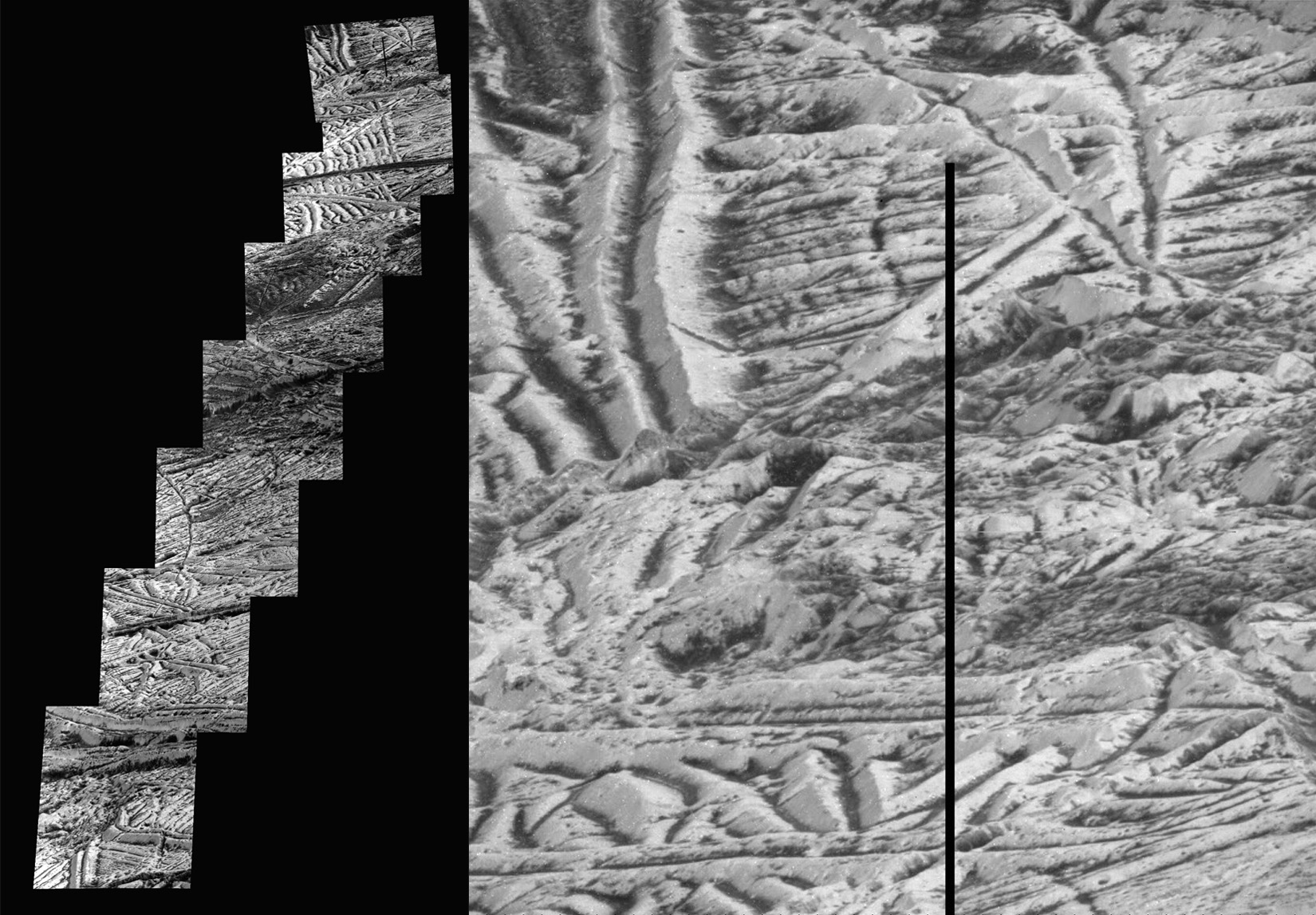
- Characterize surface and subsurface properties at the scale of the lander to support future exploration. The Europa Lander mission concept described in this report is a ‘pathfinder’ for the exploration of Europa, and potentially many other ocean worlds of the outer Solar System. As a stationary, relatively short-lived mission, this spacecraft would survey the landscape and probe the subsurface (acoustically) to determine the physical and chemical conditions on, and within, Europa. These measurements would then feed forward into designs of future robotic vehicles that would explore across the surface, or down into the subsurface. The nature of the landing environment, mobility hazards, and (near) surface physical properties within the workspace accessible to the lander’s robotic arm, are all key characteristics to observe and directly quantify as part of Goal 3. Investigations include characterizing textural, structural and compositional heterogeneities in surface and near-surface materials through measurements of the samples (with the VS, MLD, and OCA), and through observations of the terrain, from the lander workspace to the horizon and into the ice shell (with the CRSI and GSS). In addition, tidal and other dynamic motions would be investigated over the surface mission duration by monitoring the lander’s position with respect to the CRO. Goal 3 also leverages engineering support data from the descent hazards imaging LIDAR and descent imaging systems (on the Powered Descent Vehicle that delivers the lander safely to the surface) and from the robotic arm and accelerometers on the lander. These datasets would help further constrain the ice shell properties, and span the image resolution gap from flyby images to surface images collected by the lander CRSI. The combination of these multi-scale measurements would aid in understanding the physical and mechanical properties of the ice shell and any associated regolith, and would directly support future robotic exploration.
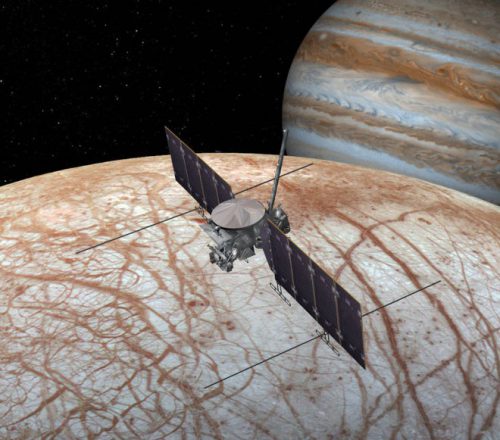
Such a life-detection mission would be the first by NASA since the Viking landings on Mars in the 1970s. In the case of Mars, efforts to detect microbial life directly were abandoned after the mixed results from the two Viking landers. Since then, Mars missions have focused on searching for evidence of habitability, including “follow the water.” Searching for life directly on Europa would be a significant and exciting shift in direction. There is still an element of caution however.
“What Viking taught is us that you don’t just jump in and look for life,” said Curt Niebur, a program scientist on both the Europa lander and flyby missions. “You need a general understanding of the environment in which you’re looking, because it can complicate things.”
As noted by Kevin Hand of the Jet Propulsion Laboratory (JPL), “As far as we can tell, Europa has the water, the elements and the energy needed to create a habitable world. If the origin of life involves some relatively easy processes, then it just might be there on Europa.”
As also stated in the report itself, “This mission would significantly advance our understanding of Europa as an ocean world, even in the absence of any definitive signs of life.”
“No singular measurement would provide sufficient evidence for the detection of life on Europa. Rather, the conclusion that evidence of life had been detected would require multiple lines of evidence, from different instruments…”
Since Europa lacks any significant atmosphere, a new landing system has to be designed, which has to work without a heat shield or parachutes. As proposed in the report, an automated “sky crane” system would be used, similar to the one used to land the Curiosity rover on Mars in 2012. The lander would be suspended beneath the sky crane and steered to a gentle touchdown on the surface using thrusters. It could change course if necessary to avoid dangerous landing areas. The sky crane itself would later crash-land a safe distance away.
The lander would include the following science instruments:
- An Organic Compositional Analyzer (OCA), which in the Baseline model payload is a Gas Chromatograph-Mass Spectrometer (GC-MS) capable of achieving a 1 picomole per gram of sample limit of detection for organics.
- A microscope system (referred to as the Microscope for Life Detection, MLD) capable of distinguishing microbial cells as small as 0.2 microns in diameter, and as dilute as 100 cells per cubic centimeter (cc, or equivalently 1 mL) of ice. In the Baseline model payload this capability is to be addressed by a combinations of spectroscopy and atomic force microscopy (AFM) or optical light microscopy (OM).
- A Vibrational Spectrometer (VS), which in the Baseline model payload is a Raman and Deep UV fluorescence spectrometer capable of characterizing both organic and inorganic compounds down to a level of parts per thousand by mass.
The lander concept is separate from the next multiple flyby mission being developed now, to be launched sometime in the early 2020s. This mission has been covered before by AmericaSpace and will not include a lander as the design now stands. Instead, the spacecraft will perform 45 close flybys of Europa, using multiple instruments to study the surface and conditions below the outer ice crust, in the ocean itself. Since the cameras will be more powerful than any sent before, the probe can examine the surface in detail, to prepare for the future lander mission. This is necessary since little is still known about the surface in terms of geology and finding the best places to land.
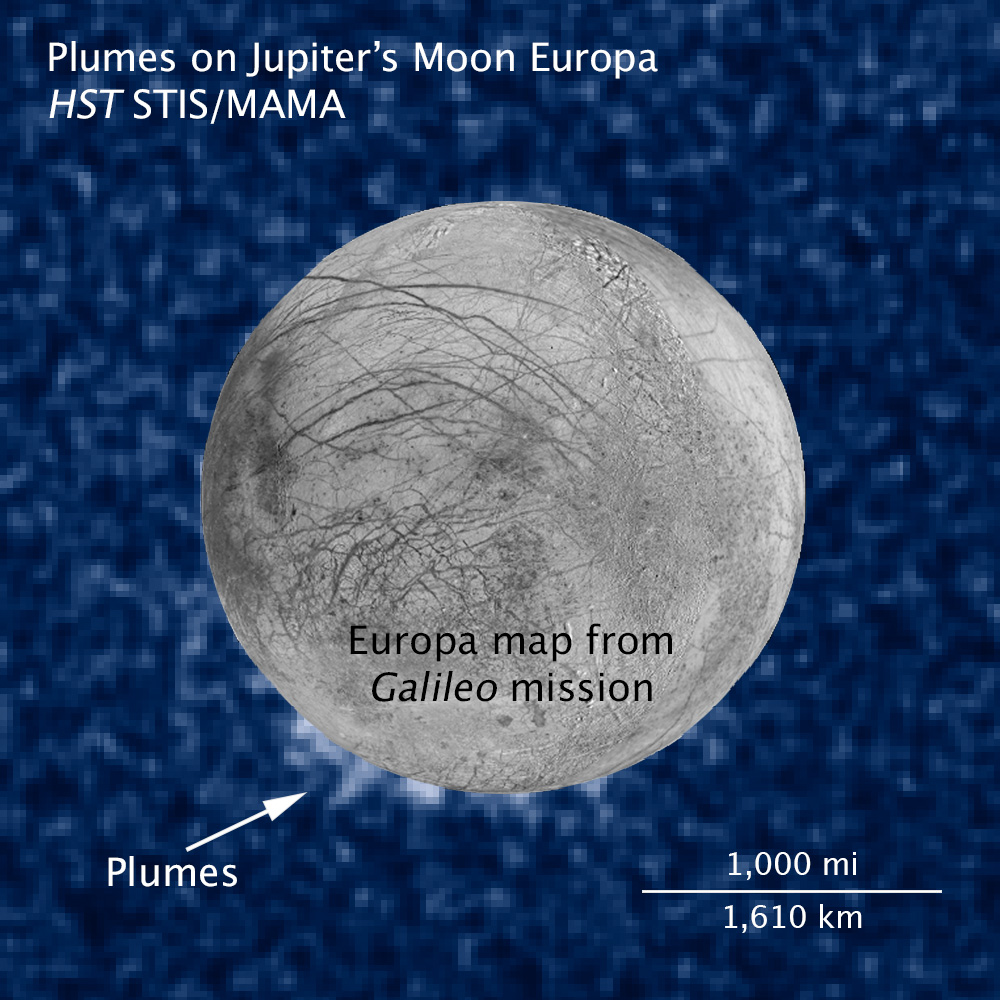
Based on findings from the Hubble Space Telescope, it is also possible that Europa has water vapor geysers similar to those on Saturn’s moon Enceladus, although they haven’t been fully confirmed yet. If they are there, the flyby probe could pass through the plumes and sample them directly, just like the Cassini spacecraft has done at Enceladus. This would be a great way to examine water from the ocean without drilling through the ice. Such a mission has also been proposed, but is still a long ways off. There are also thought to be deposits of material from the ocean on the surface which have made their way up through cracks in the ice, or the geysers, which could also be examined by the lander.
“Europa’s ocean is considered to be one of the most promising places that could potentially harbor life in the Solar System,” said Geoff Yoder, acting associate administrator for NASA’s Science Mission Directorate in Washington, D.C. “These plumes, if they do indeed exist, may provide another way to sample Europa’s subsurface.”
As also noted in the report:
“If a plume was identified during a flyby, you better believe that we would do all we could to land somewhere close to it. The goal is to get as near as possible to the water coming out from under the crust because that’s how we’ll best learn whether that water has complex organic molecules, nitrogen compounds needed for life and possibly life itself.”
The new Europa missions are part of NASA’s “Ocean Worlds Exploration Program,” which also includes Enceladus and Titan. Farther in the future, NASA envisions using a submarine-type probe to actually explore Europa’s ocean itself.
There will also be two upcoming town hall meetings to discuss the new report, the first on March 19, in conjunction with the 2017 Lunar and Planetary Science Conference (LPSC) at The Woodlands, Texas, and the second event on April 23 at the Astrobiology Science Conference (AbSciCon) in Mesa, Arizona.
The (lengthy) full report is available here.
Be sure to “LIKE” AmericaSpace on Facebook and follow us on Instagram & Twitter!
Missions » Europa Mission »



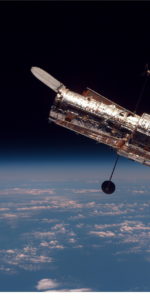
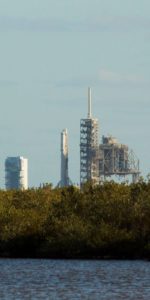
Seems as if a “fly by” mission to Europa would waste a valuable opportunity to add on a lander, similar to the Cassini/Huygens probe. The complexity of such a mission might be too grear an undertaking, but “what, if?”……